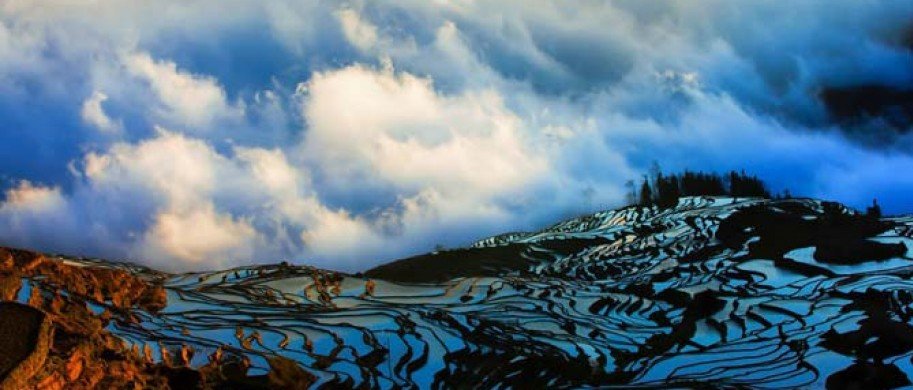
Rice terraces can be found all over Asia. In Yunnan the most famous ones are the Yuanyang Rice Terraces of the Hani and Yi people in the autonomous Honghe Prefecture in Yunnan's southeast.
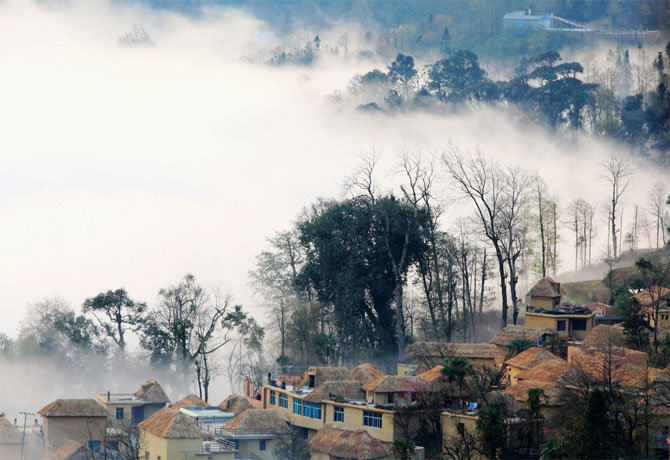
The amazing rice-terraces are built on red-soil mountains. 2500 years ago, the ancestors of Hani people came from the Tibetan Plateau to this land and worked out the terraced fields on mountains generations after generations. The rice farmers have had to practice those concepts centuries before they were widely accepted around the world. Without hard work maintaining the terrace walls and irrigation system, the precious top soil would wash down the hillsides into the rivers.The water from the rain and from mountain springs flow down to the rice terraces and the whole cycle repeats itself perpetually.
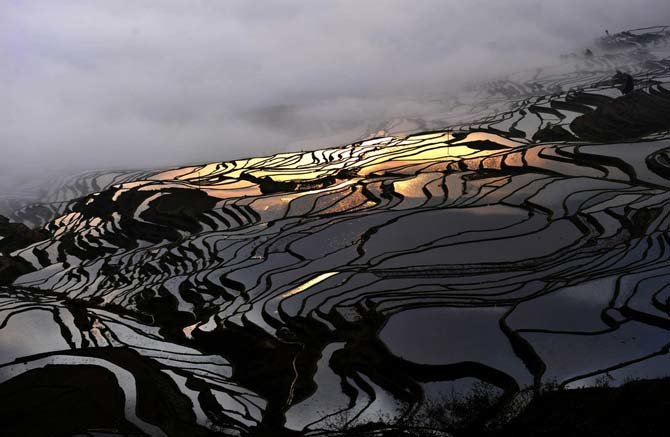
During the winter to early spring season, the entire fields are irrigated with spring water from the forest above to rejuvenate and prepare for the next growing season. There is only one harvest per year for the Yuanyang Rice Terrace; planting occurs from March to October/November every year.
Terraces
Terraces are used in farming to cultivate sloped land. Graduated terrace steps are commonly used to farm on hilly or mountainous terrain. Terraced fields decrease erosion and surface runoff, and are effective for growing crops requiring much water, such as rice. Natural terracing, the result of small-scale erosion, can occur where cattle are grazed for long periods on steep sloping pasture.
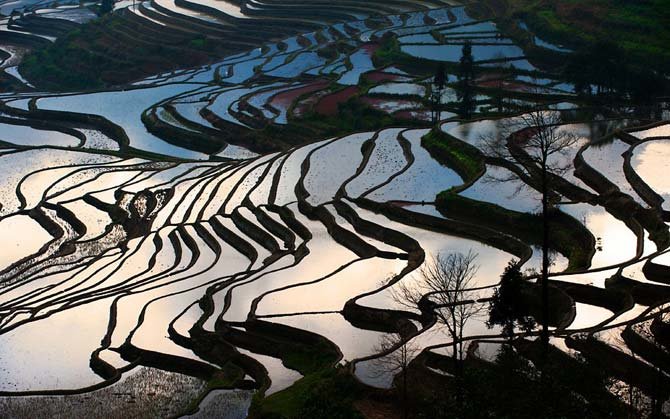
Terraced paddy fields are used widely in rice farming in east, south, and southeast Asia, as well as other places. Drier-climate terrace farming is common throughout the Mediterranean Basin, e.g., in Cadaqués, Catalonia, where they were used for vineyards, olive trees, cork oak, etc., on Mallorca, or in Cinque Terre, Italy.
In the Andes, farmers have used terraces known as andenes for over a thousand years to farm potatoes, maize, and other native crops. The Inca also used terraces for soil conservation, along with a system of canals and aqueducts to direct water through dry land and increase fertility.
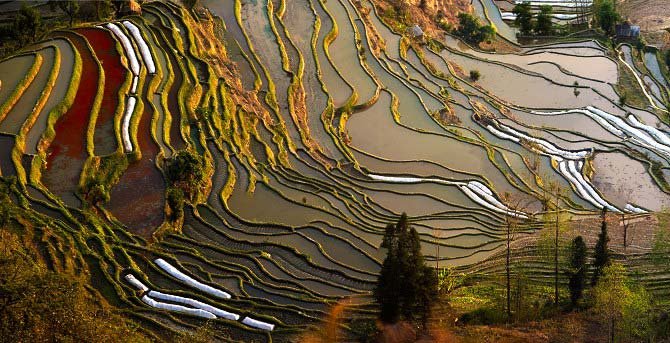
Terracing is also used for gardening on sloping terrain; the Hanging Gardens of Babylon may have been built on an artificial mountain with stepped terraces like those on a ziggurat. At the seaside Villa of the Papyri in Herculaneum, the villa gardens of Julius Caesar's father-in-law fell away to give pleasant and varied views of the Bay of Naples.
Terraced fields are common in islands with vigorous slopes. The Canary Islands present a complex system of terraces covering the landscape from the coastal irrigated plantations to the dry fields in the highlands. These terraces, which are named "cadenas" (chains), are built with stone walls of skillful design, which include attached stairs and channels.
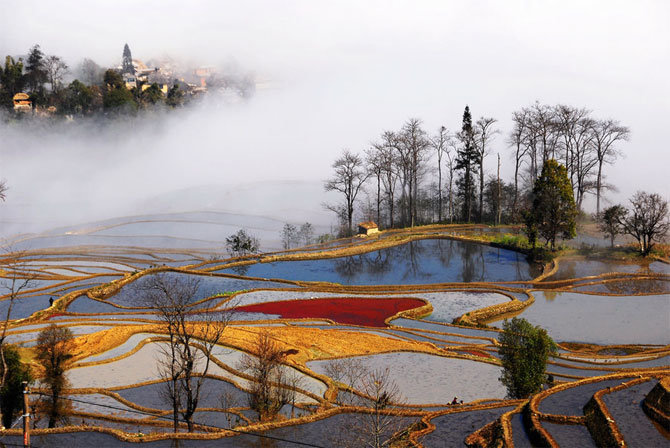
In old English, a terrace was also called a "lynch" and there is a fine example of a Lynch Mill in Lyme Regis, for which the water arrives via a river ducted along a terrace. This set-up was used in steep hilly areas in the UK.
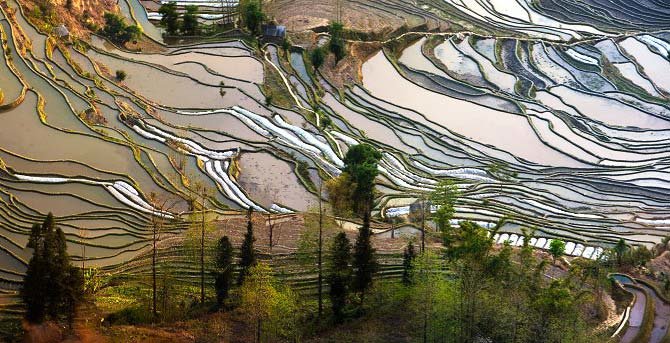
(wikipedia)
- 974 reads
